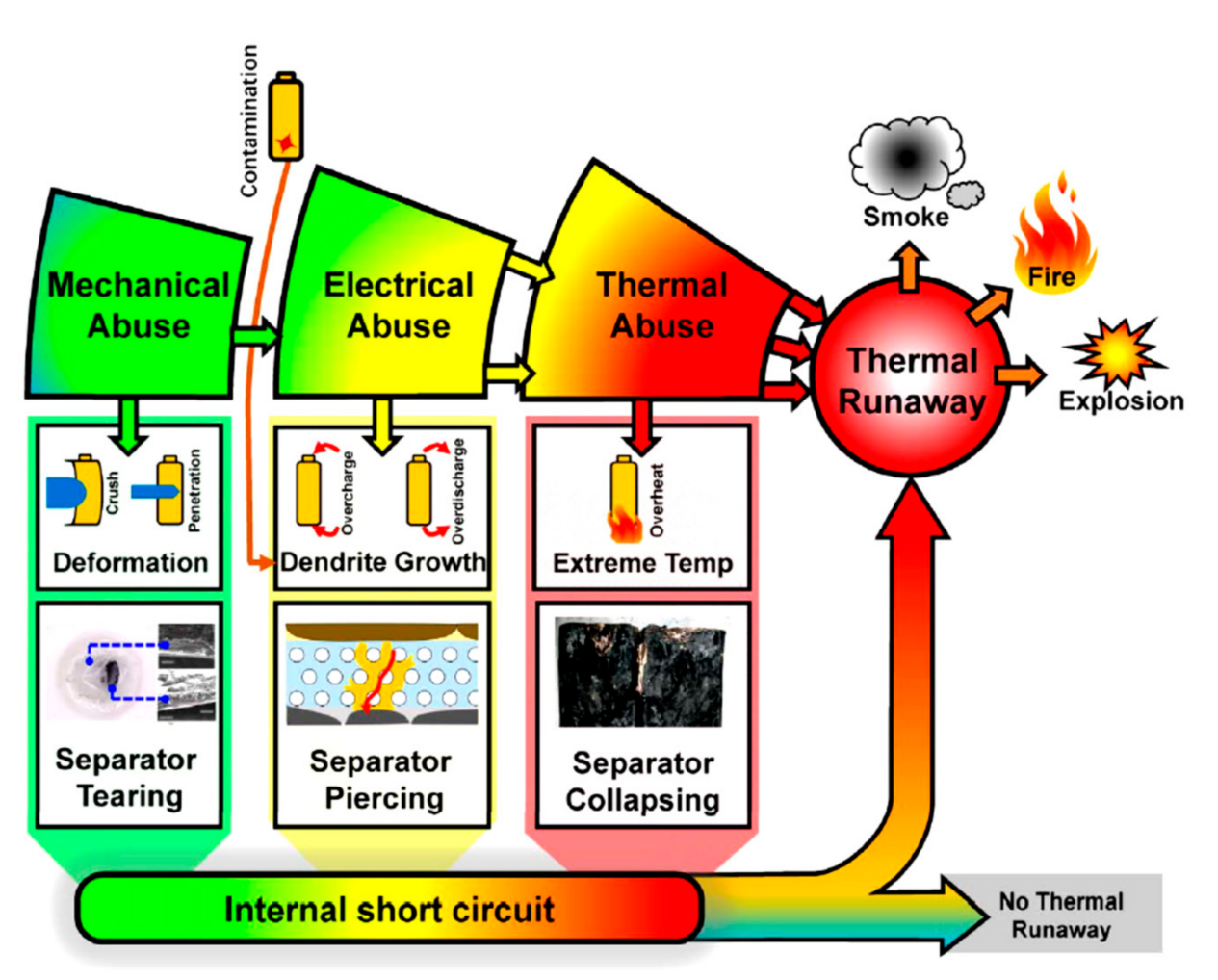In recent years, fires and explosions have occurred frequently in some electronics factories, and the safety of lithium batteries has become the most concerned issue for consumers. The fire of the power lithium-ion battery pack is very rare, but once it happens, it will cause a strong reaction and cause a lot of exposure. Lithium battery pack fires may be caused by a fault inside the battery rather than the battery itself. The main reason is thermal runaway.

Cause of fire in power lithium battery pack
The main reason for the fire of the lithium battery pack is that the heat in the battery cannot be released according to the design requirements, and the fire is caused after reaching the ignition point of the internal and external combustion materials, and the main reasons for this are external short circuit, external high temperature and internal short circuit. .
As the energy source of pure electric vehicles, the main cause of fire in lithium-ion battery packs is thermal runaway caused by battery overheating, which is most likely to occur during battery charging and discharging. Since the lithium-ion battery itself has a certain internal resistance, it will generate a certain amount of heat while outputting electric energy to provide power for pure electric vehicles, which will increase its own temperature. When its own temperature exceeds its normal operating temperature range, the entire lithium battery will be damaged. Group longevity and safety.
The power battery system is composed of multiple power battery cells. During the working process, a large amount of heat is generated and accumulated in the small battery box. If the heat cannot be quickly dissipated in time, the high temperature will affect the life of the power lithium battery pack and even Thermal runaway occurs, resulting in accidents such as fire and explosion.
In view of the thermal runaway of lithium-ion battery packs, the current domestic mainstream solutions are mainly improved from two aspects: external protection and internal improvement. External protection mainly refers to the upgrade and improvement of the system, and internal improvement refers to the improvement of the battery itself.
Here are five reasons why power lithium battery packs catch fire:
1. External short circuit
The external short circuit may be caused by improper operation or misuse. Due to the external short circuit, the discharge current of the lithium battery pack is very large, which will cause the iron core to heat up. The high temperature will cause the diaphragm inside the iron core to shrink or be completely damaged, resulting in internal short circuit and fire .
2. Internal short circuit
Due to the internal short circuit phenomenon, the high current discharge of the battery cell generates a lot of heat, which burns the diaphragm, resulting in a large short circuit phenomenon, resulting in high temperature, the electrolyte is decomposed into gas, and the internal pressure is too large. When the outer shell of the core cannot withstand this pressure, the core catches fire.
3. Overcharge
When the iron core is overcharged, the excessive release of lithium from the positive electrode will change the structure of the positive electrode. Too much lithium is easily inserted into the negative electrode, and it is easy to cause lithium to precipitate on the surface of the negative electrode. When the voltage exceeds 4.5V, the electrolyte will decompose and generate a large amount of gas. All of these can cause fires.
4. The water content is too high
Water can react with the electrolyte in the core to form a gas. When charging, it can react with the generated lithium to generate lithium oxide, which will cause the loss of core capacity, and it is very easy to cause the core to be overcharged to generate gas. Water has a low decomposition voltage and is easily decomposed into gas during charging. When these gases are produced, the internal pressure of the core increases when the outer shell of the core cannot withstand these gases. At that point, the core will explode.
5. Insufficient negative electrode capacity
When the capacity of the negative electrode relative to the positive electrode is insufficient, or there is no capacity at all, some or all of the lithium generated during charging cannot be inserted into the interlayer structure of the negative electrode graphite, and will be deposited on the negative electrode surface. The protruding “dendrite”, the part of this protuberance is more likely to cause lithium precipitation during the next charge. After tens to hundreds of cycles of charging and discharging, the “dendrites” will grow and eventually pierce the septum paper, shorting out the interior.
Post time: Jan-10-2022





